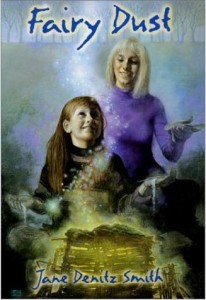 Nine-year-old Ruthie finds her world slipping away slowly when her mother leaves on a long business trip, forced to rely upon her father to take care of everything around the house. However, her father has more than enough to do, so he hires a babysitter to make sure Ruthie is taken care of properly. As each babysitter proves worse than the last, Ruthie and her father despair of finding someone capable and trustworthy enough. Then they meet Alice.
Nine-year-old Ruthie finds her world slipping away slowly when her mother leaves on a long business trip, forced to rely upon her father to take care of everything around the house. However, her father has more than enough to do, so he hires a babysitter to make sure Ruthie is taken care of properly. As each babysitter proves worse than the last, Ruthie and her father despair of finding someone capable and trustworthy enough. Then they meet Alice.
A vivacious, eccentric sixteen-year-old with an incredible imagination and boundless energy, Alice forms a near-instantaneous rapport with Ruthie, telling her stories of magic, and the fairies who live hidden all around them. Sure, she’s a bit odd, and there are rumors about her crazy mother and her own bizarre behavior at school, but Alice seems so right for the job. The room lights up when she walks in, and her belief in the magic of Fairy Dust opens Ruthie’s eyes to a world of imagination and fancy. The two become fast friends, to the point where Ruthie begins to neglect her other friends. But Alice teaches her to imagine colors like azure, snapdragon, abalone, and midnight ice. She helps Ruthie to weave a house for the fairies from twigs, and to fill it with small treasures, and shows her how to use the belief of Fairy Dust to make it all special.
The longer they’re together, the more things begin to fall apart. Alice’s carefree attitude masks deeper problems, her fanciful stories hide the truth, and her willingness to ignore the law gets them both in deep trouble. Alice’s influence does more harm than good, misleading Ruthie to the point where they can no longer be together. How will Ruthie cope with the removal of her best friend, though?
This is an absolutely charming story, whose magic is woven with words and images, metaphorical rather than literal. Those looking for actual fairies, or real fantasy, won’t find it here. This is something much more subtle, and clever. Alice teaches Ruthie how to see the magic in the world, how to extract beauty from what she sees, and how to use her imagination. But at the same time, she’s teaching Ruthie a valuable lesson about honesty, trust, and belief. The fantastic elements in Fairy Dust might be found only in stories and pretend, but they’re right where they need to be. This is a good book for younger readers, teaching them some valuable lessons without making an issue out of it. Finally, the cover is beautiful, evocative of Rackham or another Victorian artist while updating it for a modern setting.
